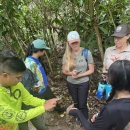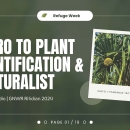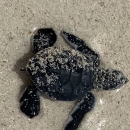States
GuamEcosystem
ForestThe Guam National Wildlife Refuge (Refuge) is implementing its first citizen science project: Fanihi Foraging!
Throughout the year, please join Refuge staff in finding five plant species that the fanihi (in CHamoru) or Mariana fruit bat (Pteropus mariannus mariannus) uses to feed on Guam, Rota, Tinian, and Saipan. While there are more trees the fanihi will use to forage, the five plant species we are targeting are breadfruit (lemmai and dukduk [dugdug in iNaturalist]), fig (nunu and dye fig), and burny bean. This information will be shared with researchers working on fanihi recovery. Observations should be recorded on iNaturalist. Join our project on iNaturalist by searching the projects list for "Fanihi Foraging" or by going directly to the project page.
Here at the Refuge, we plan to use this data to determine the distribution of each species on the Refuge to determine where we need to plant new trees and what species we need to plant. This project is part of our larger Native Limestone Forest Restoration and Enhancement project.
We hosted our second event on December 21. Thank you to everyone who came out!
The slides from our October 19 event has been posted!






